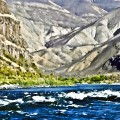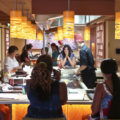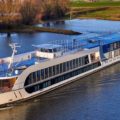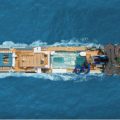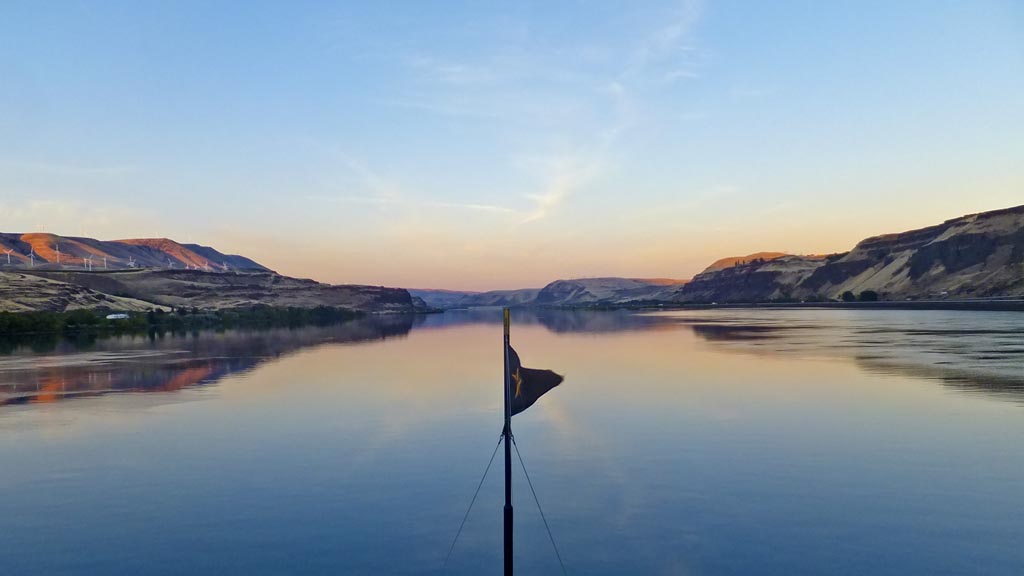
One day we were shooting rapids into Hell’s Canyon in Idaho. Another day had us counting salmon at the Bonneville dam. And on a Wednesday, we did a wine wander in the wonderfully named Walla Walla, Washington.
They’re not exactly typical cruise destinations, but this isn’t a typical cruise. It’s an Un-Cruise.
Say what?
Un-Cruise Adventures’ small ships tie up in places you won’t find on the itineraries of the major cruise lines.
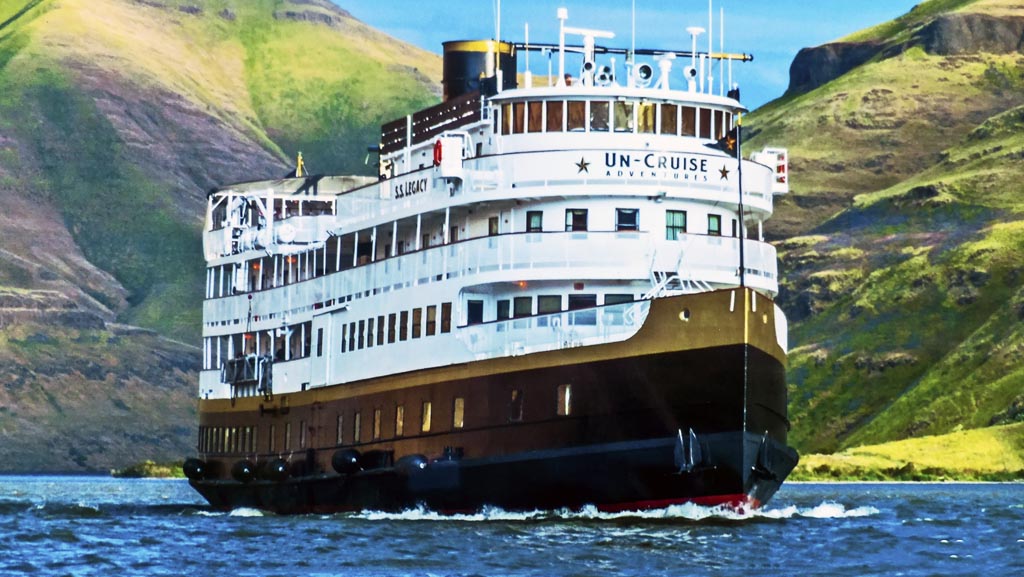
The S.S. Legacy is a niche ship within the niche cruise line. It’s a newly refurbished 30-year old reproduction of a steamer that would have plied the waters of the Columbia River in the 1890s, but with a lot fewer passengers, more entertainment and an open bar. It attracts an older yet very active and social crowd. Other ships in the Un-Cruise fleet are even smaller and they attract younger guests who like hiking and kayaking.
There are distinct advantages to being small. On most ships you’re lucky if you get to meet the captain at a cocktail party. On the Legacy, Captain Dan Quinn knows every one of the passengers by name and may even pitch in busing dishes after breakfast.
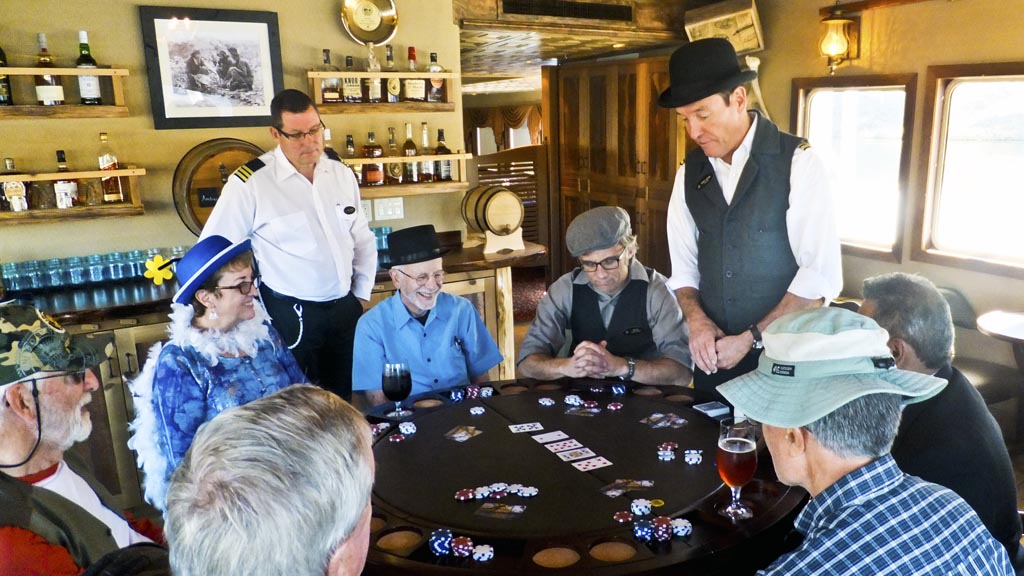
The ship that sails out of Portland is U.S. flagged and the crew is predominantly Americans who are obviously chosen for their enthusiasm. They’re not only experts on the local history, but also skilled actors who dress in nineteenth-century garb throughout most of the cruise and play roles of historic figures in evening recreations of moments in history.
Things I quickly discovered:
Un-Cruises are personal. One way or the other, everyone one the 88-passenger S.S. Legacy ends up getting to know all the crew and meet just about every one of their fellow guests by the end of the cruise. Even guests I hadn’t actually introduced myself to started to address me by name. Of course, that’s relatively easy because there’s an album of all our photos in the lounge.
Un-cruises are casual. We’re told by the crew on arriving that there’s no need to lock our rooms. There’s no jacket or tie required—jeans and running shoes are fine day and night. Activities including poker tourneys, knot tying classes, bead necklace making bees and open mic nights that are designed to get people socializing.
Un-Cruises require unhooking from the wired universe. There’s a television in each cabin, but there’s no TV dish on the ship, so the flat screens are there only to play DVDs from the library. There’s also no Internet reception, which depending on your addiction to the Web can be liberating.
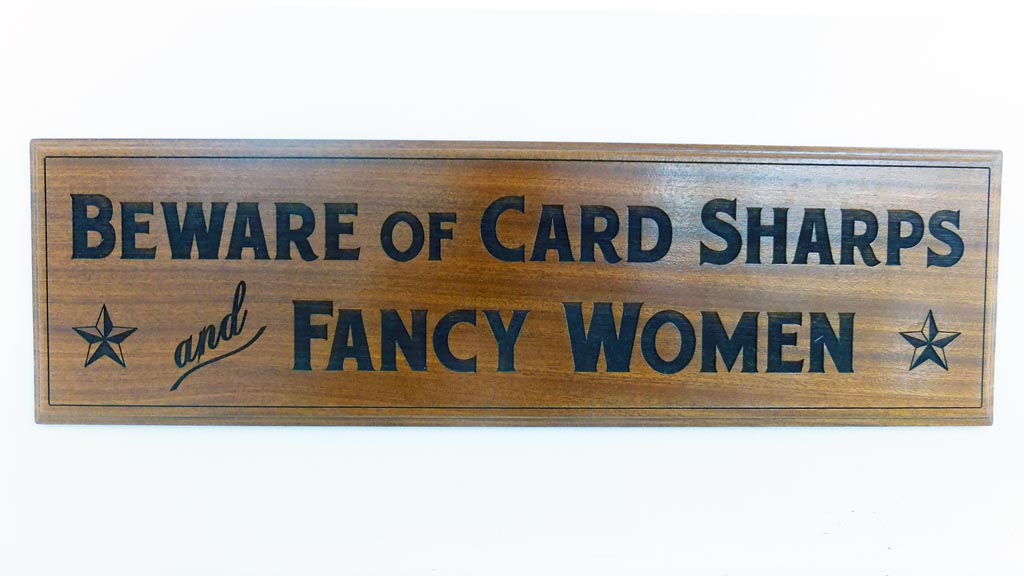
Un-Cruises also encourage activity. My Commander stateroom is authentic to its era, but compact in comparison to staterooms on ocean ships. There’s a dressing table on one side and armoire for hanging on the other and deep drawers under the beds for storage. I say beds because the twins attached to opposite sides of the room can’t be moved together.
There aren’t any private balconies and all windows face public decks, which means you have to keep the drapes closed for privacy. A helpful addition would be sheer blinds like the ship has in the lounges and dining rooms. To be able to watch the passing scene from our room, my wife ended up taping some tissue paper to the upper part of the window to block eye-level view from outside.
Then again, we didn’t spend many waking hours in our cabin anyway.
Each day, breakfast was at 8 a.m. and we were off the ship at 9 a.m. for a complimentary itinerary that brought visits to sites ranging from the Bonneville power dam,–where we watched the salmon swimming upstream to spawn–to a pioneer village, to the site of an early mission set up to convert the local tribes to Christianity.
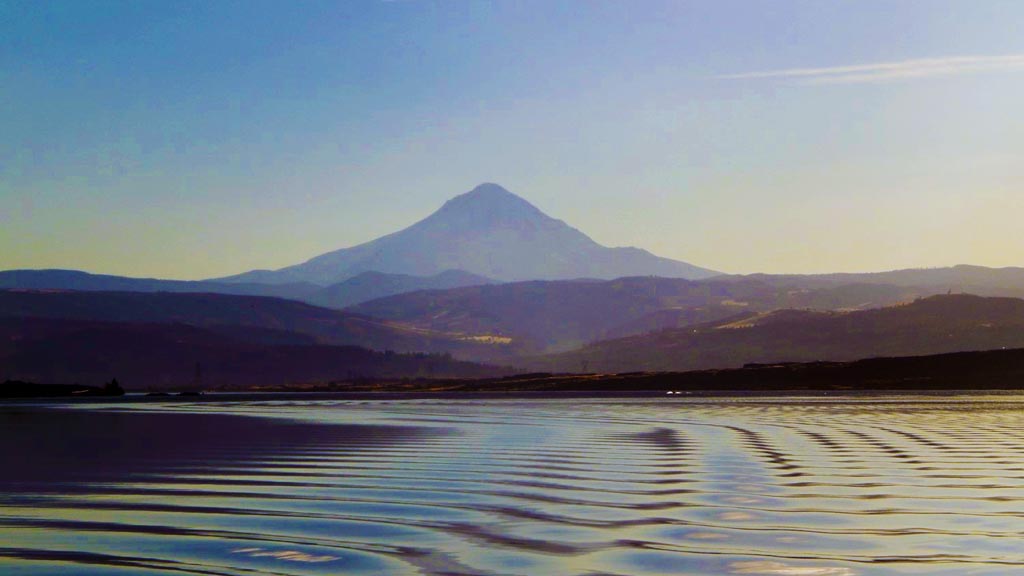
I found it refreshing that the ship’s knowledgeable crew dissolved some of the sugar coating that patriotic historians have created around events in American history.
Several of our tours included visits to sites connected with the 1805 trek of American explorers Capt. Merriweather Lewis and Lieut. William Clark. The museums extol the expedition as a brave venture into the unknown–even though they were traveling through lands long inhabited by native tribes and British and French trappers and traders had been operating in the territory for decades.
I was just as intrigued by the fact that their Shoshone Indian guide Sacagawea did everything those tough guys did while tending a papoose she carried in a sling on her back.
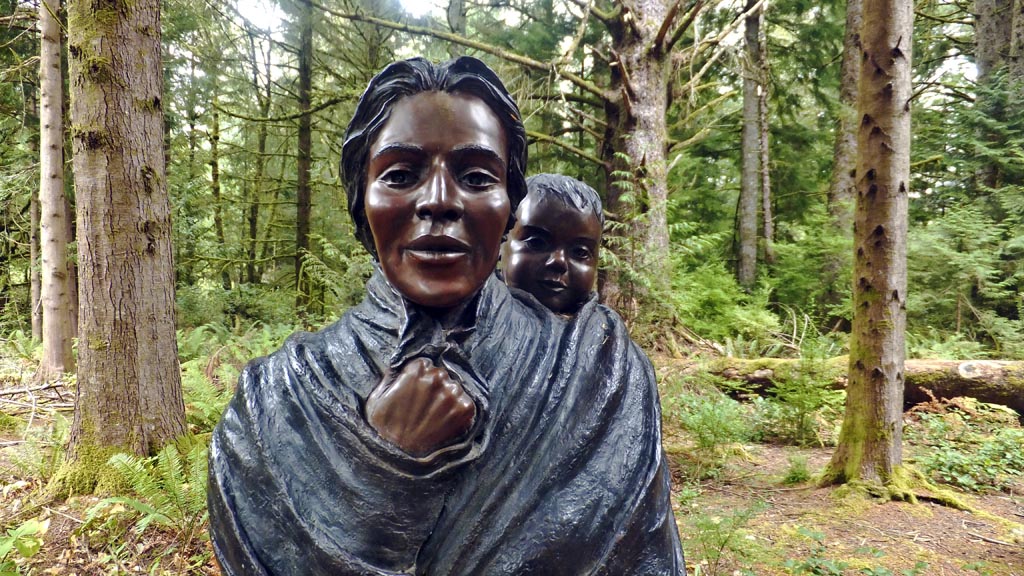
We also learned uncomfortable truths, like the fact that the coming of the American settlers decimated the Indian tribes of the West. In an evening session, we learned that Rosie the Riveter and her sisters who so skillfully turned out ships and planes for the war effort while the men were off fighting in World War Two were rewarded by being sacked and told to go back to their kitchens when the boys returned from the war.
Further insights were added by experts who came on board, including J. R. Spencer (aka White Bull), a Nez Perce tribe storyteller who peppered his talk of traditions with wry humor.
We got a deeper understanding of history and even more an eye-opening appreciation of the beauty of nature in the river valleys that–aside from the railroads on either bank—remain largely un-spoiled.
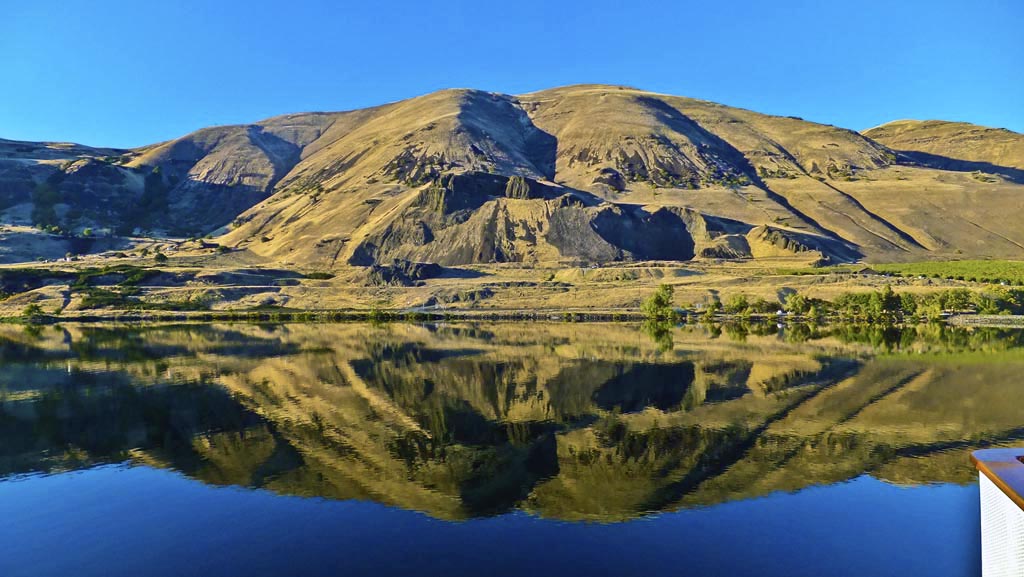
The landscape along the rivers is hardly what you’d imagine it would be, considering how lush and verdant the Pacific coasts of Washington and Oregon are. Once we passed beyond the coastal mountains, the deep river gorges are treeless. Fantastic rock formations were created by ancient volcanoes that laid down layer after layer of lava that were then repeatedly water blasted by torrents of water during glacial melts in the Ice Age.
Un-Cruises are Tasty. Happily, as casual as life on board is, Legacy takes food seriously and the tiny kitchen turns out consistently inventive and palate pleasing meals. While there are only two entrees on the menus at lunches and dinners, I often found both options so intriguing that I joined fellow guests in asking for a “half and half” to try both, which seems to be an un-cruise thing.
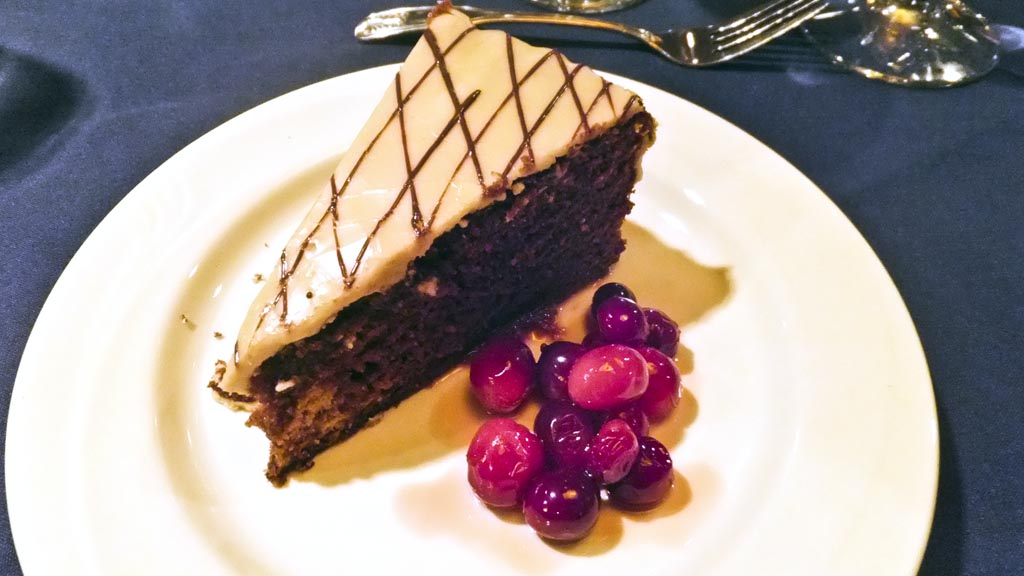
An Un-Cruise affectation is a cookie of the day in the lounge at happy hour. But there are also inventive hot hors d’oeuvres, including a memorable oysters Rockefeller one evening.
We also had ample samples of the wines of the up-and-coming Oregon and Washington state region at the open bar on board and during tastings ashore. On my cruise, though, we didn’t really have opportunities to visit actual vineyards. Our explorations took us only to tasting rooms in Walla Walla and The Dalles rather than take the winding roads over the hills to the actual estates in Washington.
Guests can get a chance to see them in a new itinerary offered in 2015 on Legacy: Ameritage! Four Rivers of Wine & History. It includes a local wine expert on board for presentations and wine tastings and samplings at nine wineries that are included in the cruise fare.
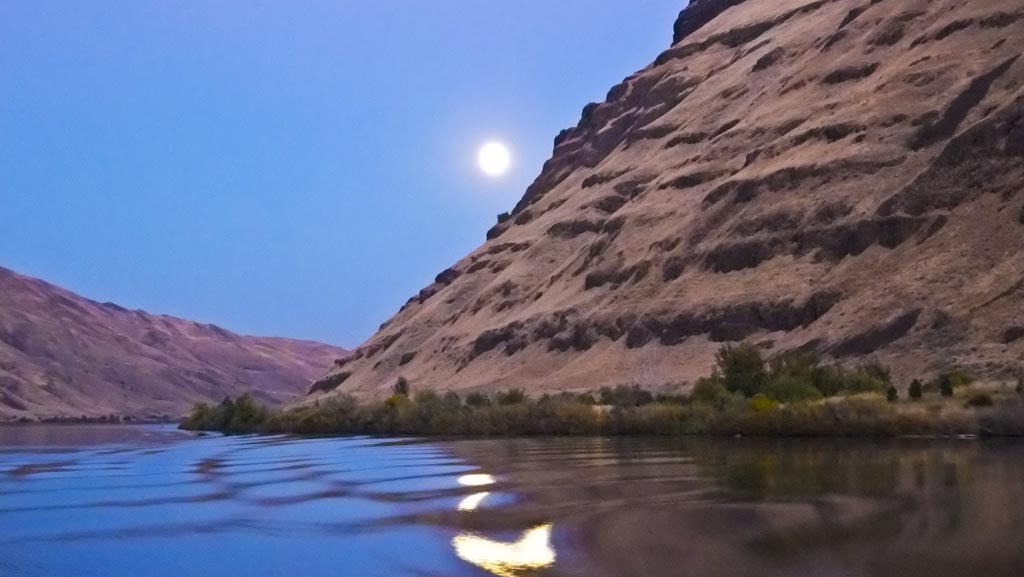
An Un-Cruise may not be for everyone, but it’s certainly an option that people looking for a river cruise experience close to home should consider. Thousands of people every week go on cruises, but how many can go on an Un-Cruise?


